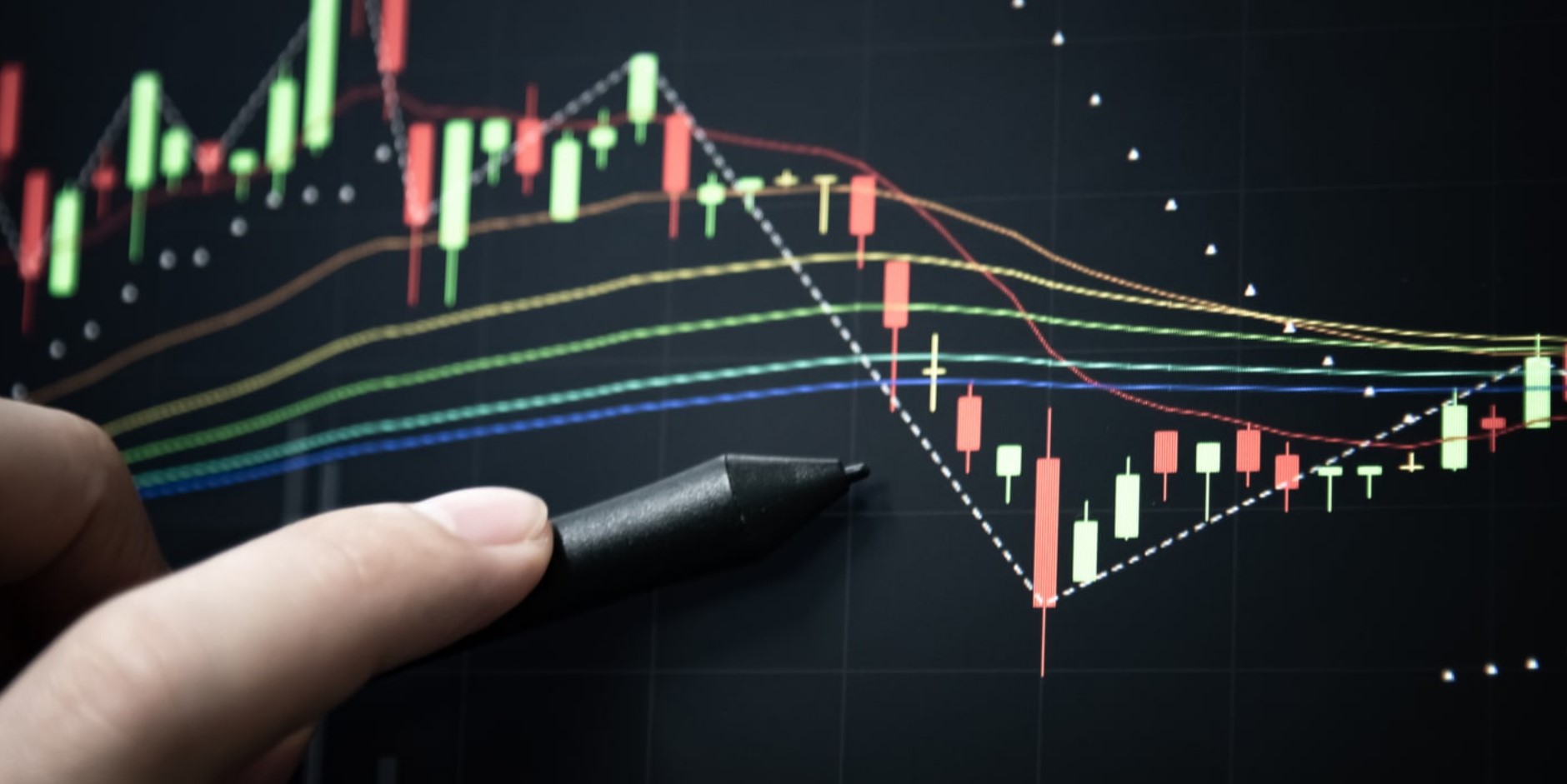In the ever-evolving world of Forex trading, where billions of dollars change hands daily, traders continually seek an edge. This pursuit has led to the growing importance of technical indicators in Forex analysis. These tools, with their ability to decipher market trends and potential price movements, have become indispensable for traders worldwide. In this article, we will delve into the profound influence of technical indicators in Forex analysis, exploring how they work, their types, and their significance in guiding trading decisions.
Understanding Technical Indicators
Technical indicators form the cornerstone of technical analysis in Forex trading. These tools are used by traders to decipher patterns, predict price movements, and make informed trading decisions. To comprehend the significance of technical indicators, it’s crucial to delve into their types and functions.
Types of Technical Indicators
1. Moving Averages (MA)
Moving averages are versatile and widely used technical indicators. They smooth out price data by calculating the average price over a specified period, whether short-term or long-term. The simple moving average (SMA) provides an uncomplicated view of an asset’s average price over time. In contrast, the exponential moving average (EMA) places more weight on recent prices, making it more responsive to current market conditions.
Traders employ moving averages to identify trends and reversals. When an asset’s price moves above its moving average, it often signals an uptrend, suggesting a buying opportunity. Conversely, when the price dips below the moving average, it may indicate a downtrend, prompting traders to consider selling.
Moving averages are invaluable for filtering out market noise and providing a clear picture of price direction. Whether used individually or in combination, these indicators are fundamental tools for traders seeking to identify trend changes and make timely decisions.
2. Relative Strength Index (RSI)
The Relative Strength Index (RSI) is a momentum oscillator that assesses the speed and magnitude of price changes. It ranges from 0 to 100 and is a popular indicator for gauging overbought and oversold conditions. An RSI reading above 70 often suggests that an asset may be overbought, indicating a potential upcoming correction or reversal. Conversely, an RSI reading below 30 implies that the asset may be oversold, suggesting a possible buying opportunity.
The RSI also assists traders in recognizing divergence between an asset’s price and its momentum. Divergence can signal a weakening trend or an impending reversal, allowing traders to adjust their strategies accordingly.
3. Bollinger Bands
Bollinger Bands consist of three lines: a middle band, which is typically a simple moving average (SMA), and two outer bands that are standard deviations away from the middle band. These bands dynamically expand and contract based on market volatility. When the price moves closer to the outer bands, it indicates higher volatility, while prices closer to the middle band suggest lower volatility.
Traders often use Bollinger Bands to identify potential price breakouts. When the price approaches or breaches the outer bands, it can signify an impending breakout, which may lead to a substantial price movement. Additionally, when prices fluctuate within the bands, it suggests a ranging or sideways market, providing valuable information for traders who employ different strategies in such conditions.
4. MACD (Moving Average Convergence Divergence)
The Moving Average Convergence Divergence (MACD) is a versatile and widely used indicator that combines trend-following and momentum aspects. It consists of two components: the MACD line and the signal line. The MACD line is calculated by subtracting the 26-period EMA from the 12-period EMA, while the signal line represents a 9-period EMA of the MACD line.
Traders primarily use the MACD to identify changes in momentum and potential trend reversals. When the MACD line crosses above the signal line, it generates a bullish signal, suggesting a potential uptrend. Conversely, when the MACD line crosses below the signal line, it produces a bearish signal, indicating a potential downtrend.
In addition to these crossovers, traders also pay attention to the divergence between the MACD line and the price, which can provide insights into the strength of a trend. A bullish divergence occurs when the price forms lower lows while the MACD forms higher lows, potentially indicating a trend reversal to the upside. Conversely, a bearish divergence occurs when the price forms higher highs while the MACD forms lower highs, signaling a potential downturn.
These four types of technical indicators serve as the foundation for effective Forex analysis. They empower traders with valuable insights into market trends, momentum shifts, and potential entry and exit points. In the fast-paced world of Forex trading, understanding these indicators and how to interpret them is crucial for success.
The Significance of Technical Indicators
Technical indicators are the driving force behind informed Forex trading decisions. Their significance is multifaceted, offering traders a comprehensive toolkit to navigate the complexities of the foreign exchange market. Here are some key aspects where technical indicators play a vital role:
| Aspect | Role of Technical Indicators | Example Indicator(s) |
| Price Trend Identification | Trend Confirmation: Confirm existing trends. | Moving Averages (SMA, EMA) |
| Trend Reversals: Identify potential trend reversals. | MACD | |
| Consolidation Zones: Detect range-bound markets. | Bollinger Bands | |
| Entry and Exit Points | Overbought and Oversold Conditions: Identify potential entry and exit points. | RSI |
| Price Breakouts: Anticipate price breakouts. | Bollinger Bands | |
| Divergence Signals: Spot opportunities based on divergence. | MACD | |
| Risk Management | Volatility Assessment: Assess market volatility. | Bollinger Bands (Volatility Expansion) |
| Stop-Loss Placement: Determine optimal stop-loss levels. | Moving Averages | |
| Position Sizing: Adjust position sizes based on volatility. | Average True Range (ATR) | |
| Confirmation of Fundamental Analysis | Alignment with Fundamentals: Confirm or diverge from fundamental analysis. | Various indicators in conjunction with fundamental data |
Price Trend Identification
- Trend Confirmation:
- Moving averages, such as the simple moving average (SMA) and exponential moving average (EMA), help traders confirm existing trends. When the current price is consistently above the moving average, it confirms an uptrend, while a price below the moving average confirms a downtrend.
- Trend Reversals:
- Technical indicators, like the MACD, are excellent for identifying potential trend reversals. When the MACD line crosses above the signal line, it suggests a bullish reversal, and when it crosses below, it indicates a bearish reversal.
- Consolidation Zones:
- Bollinger Bands are invaluable for spotting consolidation zones or sideways markets. When the price fluctuates within the bands, it signals a period of range-bound trading, allowing traders to adjust their strategies accordingly.
Entry and Exit Points
- Overbought and Oversold Conditions:
- The Relative Strength Index (RSI) is instrumental in identifying overbought and oversold conditions. An RSI above 70 indicates overbought, suggesting a potential sell opportunity, while an RSI below 30 suggests oversold conditions, indicating a potential buy opportunity.
- Price Breakouts:
- Bollinger Bands can help traders anticipate price breakouts. When the price approaches or breaches the outer bands, it often signifies an impending breakout, which traders can capitalize on.
- Divergence Signals:
- MACD divergence, where the MACD line diverges from the price, is a powerful signal for entry and exit points. Bullish divergence suggests a potential buy opportunity, while bearish divergence hints at a possible sell opportunity.
Risk Management
- Volatility Assessment:
- Bollinger Bands provide insights into market volatility. When the bands expand, it indicates higher volatility, prompting traders to adjust their position sizes and set wider stop-loss orders.
- Stop-Loss Placement:
- Traders use technical indicators to determine optimal stop-loss placement. For example, a trader may set a stop-loss just below a key moving average to limit potential losses if the trend reverses.
- Position Sizing:
- Volatility indicators like Average True Range (ATR) can help traders adjust their position sizes based on market conditions. Higher volatility may warrant smaller positions to manage risk effectively.
Confirmation of Fundamental Analysis
- Alignment with Fundamentals:
- Technical indicators can provide confirmation or divergence from fundamental analysis. For instance, if strong economic data supports a currency’s strength, technical indicators can validate this by showing a corresponding uptrend.
- Timing Entry and Exit:
- While fundamental analysis provides the “why” behind market movements, technical indicators help traders time their entry and exit points. They ensure that traders don’t miss opportunities or enter trades prematurely.
Incorporating technical indicators into your Forex trading strategy is essential for making informed decisions and managing risk effectively. These tools not only enhance your ability to identify trends but also help you fine-tune your entry and exit strategies, all while aligning with the broader fundamentals of the market.
In conclusion, the influence of technical indicators in Forex analysis cannot be overstated. These powerful tools provide traders with essential insights into market trends, entry and exit points, risk management, and even confirmation of fundamental analysis. As the Forex market continues to evolve, mastering the use of technical indicators is a skill that can significantly enhance a trader’s success.
FAQs
1. Can technical indicators guarantee profitable trades?
No, technical indicators cannot guarantee profitable trades. They are tools that provide insights and probabilities, but success in Forex trading depends on a combination of factors, including risk management and market understanding.
2. Are there any free resources to learn about technical indicators?
Yes, there are many free resources available online, such as tutorials, articles, and video courses, that can help you learn about technical indicators.
3. How can I choose the right technical indicators for my trading strategy?
The choice of technical indicators depends on your trading strategy and goals. It’s essential to understand the strengths and weaknesses of each indicator and how they align with your approach to trading.
4. Do professional traders rely solely on technical indicators?
Professional traders often use a combination of technical and fundamental analysis, along with their experience and intuition, to make informed trading decisions.
5. Can technical indicators be used in other financial markets besides Forex?
Yes, technical indicators are widely used in various financial markets, including stocks, commodities, and cryptocurrencies, to analyze price trends and make trading decisions.

